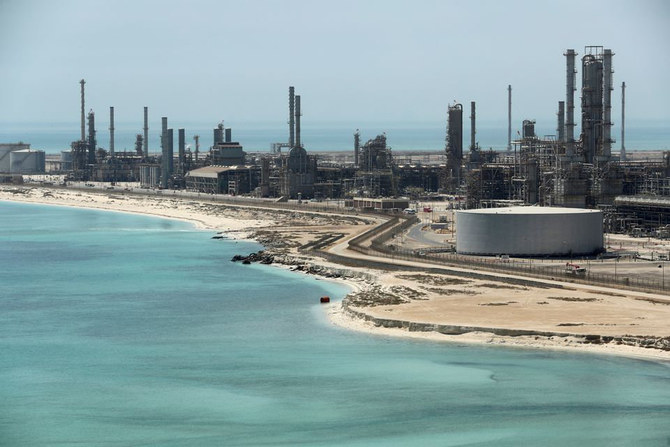
- ARAB NEWS
- 06 Jul 2025

The OPEC+ agreement reached on Sunday brings back into sharp focus the importance of oil market developments to Saudi Arabia’s fiscal planning and budgetary controls.
Both Saudi Arabia and Russia, the de facto leaders of the OPEC+ alliance, will see their baselines rise to 11.5 million barrels per day (bpd) each from their current 11 million bpd, while the UAE, Kuwait and Iraq will all see their baselines rise as well.
As far as Saudi Arabia is concerned, the OPEC+ outcome is a welcome respite in its ongoing fiscal stabilization program, as when confronted with a dual shock from the coronavirus disease (COVID-19) pandemic and a collapse in oil prices in 2020, the Kingdom’s gross domestic product (GDP) reached its trough in the second half of 2020, when overall economic activity was about 7 percent below its pre-pandemic level, affecting both hydrocarbon and non-oil private sector growth. The voluntary Saudi 1 million bpd production reduction over last year’s agreed OPEC quota cuts to stabilize oil prices contributed further to the subdued fiscal situation.
It is estimated that a $10 per barrel movement in oil prices would change the Saudi budget deficit forecast by as much as 3.5 percent of the GDP, while a 1 million bpd difference in production would change the fiscal deficit by 2 percent of the GDP.
On both counts, and assuming that the current oil price rise trajectory is maintained, as well as the planned increase in Saudi oil production and adding back of the voluntary 1 million bpd cut in full, the outlook for Saudi Arabia’s fiscal deficit and GDP is more positive in 2022 than forecasted, affecting plans for major international and domestic debt borrowing.
It is estimated that a $10 per barrel movement in oil prices would change the Saudi budget deficit forecast by as much as 3.5 percent of the GDP, while a 1 million bpd difference in production would change the fiscal deficit by 2 percent of the GDP.
Dr. Mohamed Ramady
Sustained higher oil prices, at levels that are acceptable to both producers who are faced by the possibility of “stranded” national oil assets in the face of fossil fuel disinvestment, and consumers facing larger import oil bills, are key Saudi and OPEC objectives as repeatedly stressed by Saudi Energy Minister Prince Abdul Aziz bin Salman. Stability and certainty for both sides, without prices overshooting or in free fall, are the principal energy pillars of the OPEC+ pact.
This suits Saudi fiscal planners well. The long-term key is for continuing government commitment to fiscal consolidation and momentum, including on the public sector wage bill and subsidies.
The forecasted budget deficit is set to narrow to 3.3 percent of the GDP in 2021, better than the 4.9 percent budget target set by rating agency Fitch, which was forecast before the current higher oil price. Such measures will reduce the Kingdom’s break-even fiscal oil price from about an estimated $64 per barrel to $58 per barrel levels, well enough to accommodate for a future fall in oil prices without the need for large-scale drawdown in reserves or international borrowing. Irrespective of oil price trajectories, this is not the time to take the foot off the fiscal consolidation program brakes and reduce oil revenue dependency.
• Dr. Mohamed Ramady is a former senior banker and Professor of Finance and Economics, King Fahd University of Petroleum and Minerals, Dhahran.